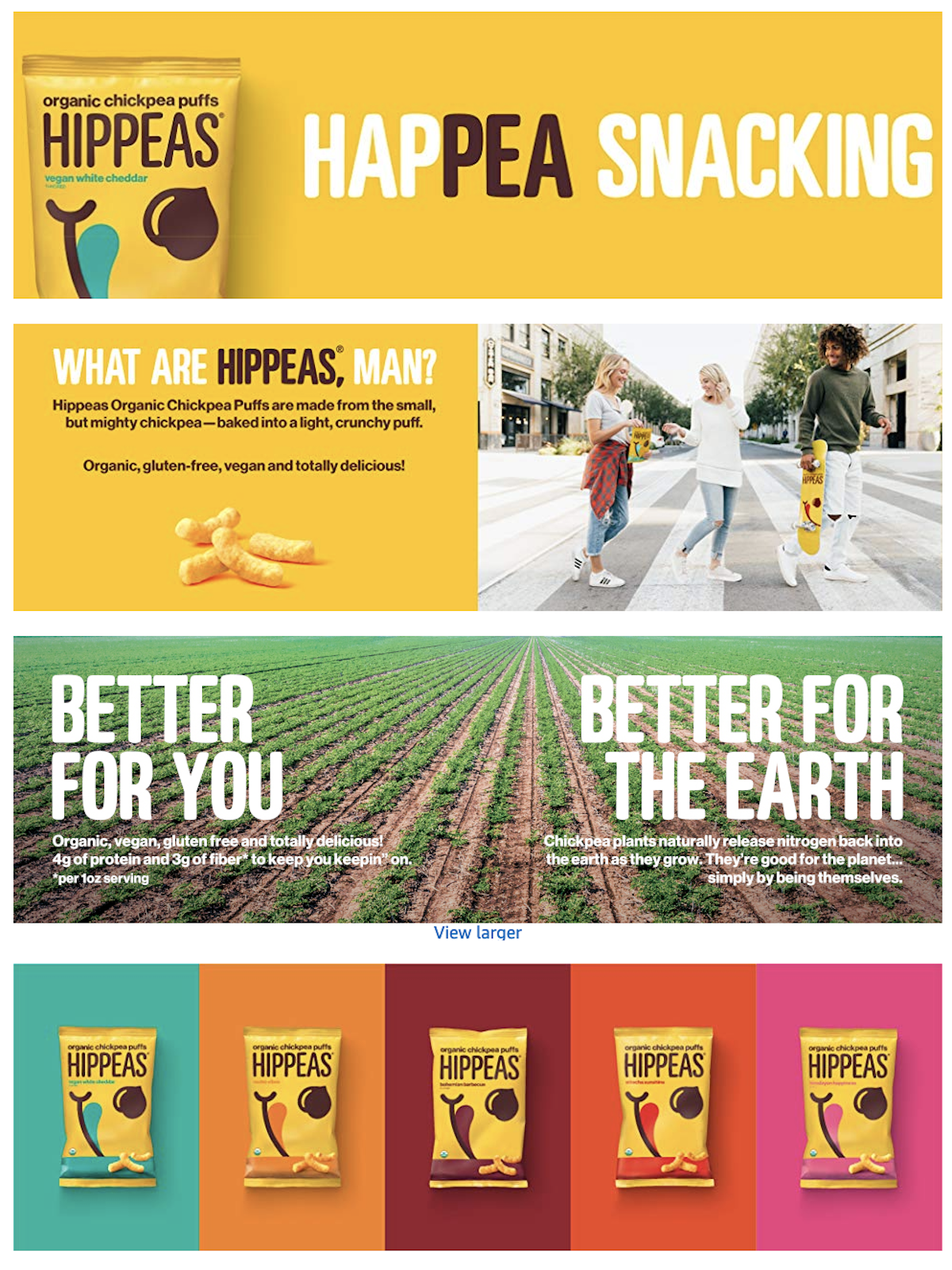How To Use Amazon A+ Content to Boost Sales
Written By: Dom Scarlett
Think back to the last product you bought online: What did you do before clicking “buy now”? Chances are good that you, like so many others, visited Amazon first.
In the second quarter of 2023, eMarketer notes, more than half (57%) of consumers started their buying journey with the same white search box.
As you scrolled past the sponsored posts, through the continually shifting search results, and clicked on a product, Amazon A+ content was likely the driving force in your final buying decision. Here’s a breakdown of how this content works, along with Amazon A+ content examples from top brands.
What Is Amazon A+ Content?
Amazon A+ content — also known as enhanced content and rich media on other retailer websites — comprises images, videos, banners, and other rich media content that can take product detail pages (PDPs) from good to great.
Amazon sellers with a Professional plan can register for Amazon A+ content, which Amazon claims can help boost sales by up to 20% — primarily because today’s highly engaging PDPs are increasingly capturing shoppers’ dollars.
Salsify’s “2024 Consumer Research” report found that 78% of online shoppers clicked “buy” because the product listing included engaging images.
Amazon A+ content enables sellers to deliver the kind of high-quality, interactive content consumers want — and drives sales.
What Are the Benefits of Adding Amazon A+ Content to Your Product Page?
Among all the benefits Amazon A+ content offers sellers, one is a true game-changer: This content helps you stand out on the digital shelf.
And with today’s highly saturated marketplace — with more than 9 million sellers, according to AMZScout — standing out is absolutely critical.
Shoppers expect action-packed product pages, Salsify’s consumer research found, including high-quality images and videos; product demonstrations; and interactive product views.
These elements create an engaging shopping experience that couples the convenience of online shopping with the benefits of in-store browsing, such as interacting with a product before purchasing it.
From comparison charts, 360-degree image spins, and video to image galleries and graphics, enhanced content experiences help brands better connect with shoppers and tell a richer brand story across channels and touchpoints. They also help drive conversions: Profitero found that sellers who use enhanced content on Amazon see sales increase up to 58%.
How To Implement Amazon A+ Content (With Amazon A+ Content Examples)
There are three essential steps for implementing A+ content on Amazon to drive sales and engage shoppers.
Step 1: Centralize Product Content to Streamline Processes
Many brands still struggle with scattered product content and organizational silos that complicate the go-to-market (GTM) process. From endless spreadsheets and dreaded out-of-office emails that delay your team from getting the information they need, gathering product content can be time-consuming, costly, and inefficient.
Successful brands start by centralizing their product content to streamline processes and develop a complete view of what’s available. An agile product information management (PIM) solution allows brands to organize and manage this process successfully.
Product content fuels the online journey for your customers, and optimizing the GTM process for your ecommerce team can help them take back the time they need to develop engaging content experiences.
Step 2: Meet Customer Demands for Product Content
Shoppers increasingly demand more product information before making final purchasing decisions. According to Salsify’s research, 45% of shoppers will abandon a purchase because of low-quality product images and 42% will do so if product information is incomplete or poorly written.
A lack of product details, low-quality or scarce images, or inconsistencies between retailer websites can break a sale for your customers, which is why it’s vital to meet their demands for product content.

Image Source: Hippeas Amazon
Consider the content that would be the most valuable for their shopping experience: What questions do your customers frequently ask your customer service or social media teams? Which elements stand out the most in your online reviews?
Put yourself in their shoes: What information would you want to know about a product within your specific industry? While there are many ways to format your A+ content on Amazon to answer this question, three focus areas could help your brand highlight the most critical information for your audience.
Amazon A+ Content Examples
Here are a few Amazon A+ content examples that highlight these areas:
- Brand focus: A consumer packaged goods (CPG) brand can feature a profile of the company, highlighting its commitment to sustainability and healthy ingredients. A brand focus allows you to highlight how you stand out from your competitors and could give newer brands the ability to grab the attention of new customers.
- Product category focus: A beauty brand can include a comparison chart highlighting the differences between its lipstick product lines. It could also highlight its skincare line, emphasizing the benefits of each element or featured ingredients. A product category focus can help your brand expand, upsell, and point your customers toward new product discoveries.
- Product focus: A tool brand can include a video highlighting the many home improvement projects suited for its new circular saw model. It could also highlight the product’s unique features, such as a spindle lock or laser guide. Highlighting a single product could be especially helpful for your most popular items, as this information can help your customers make the final decision when comparing your product against the competition.
This A+ content allows your brand to highlight critical information below the fold and can be mixed and matched depending on the product. These product pages must be as important to your team as your product packaging, as they help convey your brand identity on the digital shelf.

Image Source: Revlon Amazon
Step 3: Continually Optimize Product Pages
The set-it-and-forget-it model doesn’t work for product pages. What works one season might not the next, and continual optimization is necessary for the most successful brands.
Whether you decide to update your A+ content seasonally to highlight the Fourth of July, Thanksgiving, or Valentine’s Day product lines or make adjustments to keep up with new trends, having the ability to monitor your success and adapt quickly on Amazon can help your brand successfully navigate shifting demands.
One way to develop a holistic view of your product-page performance is with digital shelf analytics. These capabilities allow you to monitor your sales rankings and share-of-search performance, compare your product content against best practices, and ensure the consistency of your product information across all of your priority retailers.
Make the Grade on Amazon
The Amazon landscape shifts frequently, but these challenges can transform into opportunities with the right strategy. Impactful A+ content requires an organized, informed, and agile ecommerce team that has the tools required to navigate the digital shelf with agility and speed.
The Complete Product Page Toolkit
It’s not always easy to know what to add to turn lackluster product pages into ones that shine. Learn all the how-tos in this toolkit.
DOWNLOAD TOOLKITWritten by: Dom Scarlett
Dom Scarlett (she/her) is a writer, editor, and marketer based out of Boston, Massachusetts. She is the director of content marketing at Salsify and specializes in business-to-business (B2B) and business-to-consumer (B2C) marketing, commerce, media, travel, technology, and finance.
Recent Posts
How To Kick Shopping Cart Abandonment to the Curb
Gen Alpha Trends: How the Next Generation Influences Buying Behavior and Decisions
Do Brands Need Social Media Influencers In The Age of AI?
Subscribe to the Below the Fold Newsletter
Standing out on the digital shelf starts with access to the latest industry content. Subscribe to Below the Fold, our monthly content newsletter, and join other commerce leaders.

.svg)